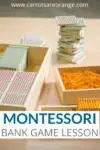I earn commissions from my affiliated links. Please see my disclosure policy for more details.
This lesson is meant to be given to one or two children [age 5+] on a work mat with access to a Bead Bank. The Bead Bank is one of the most expensive Montessori materials but will get a lot of use. The Bank Game is included in the decimal system – place value learning portion of the Montessori math path.
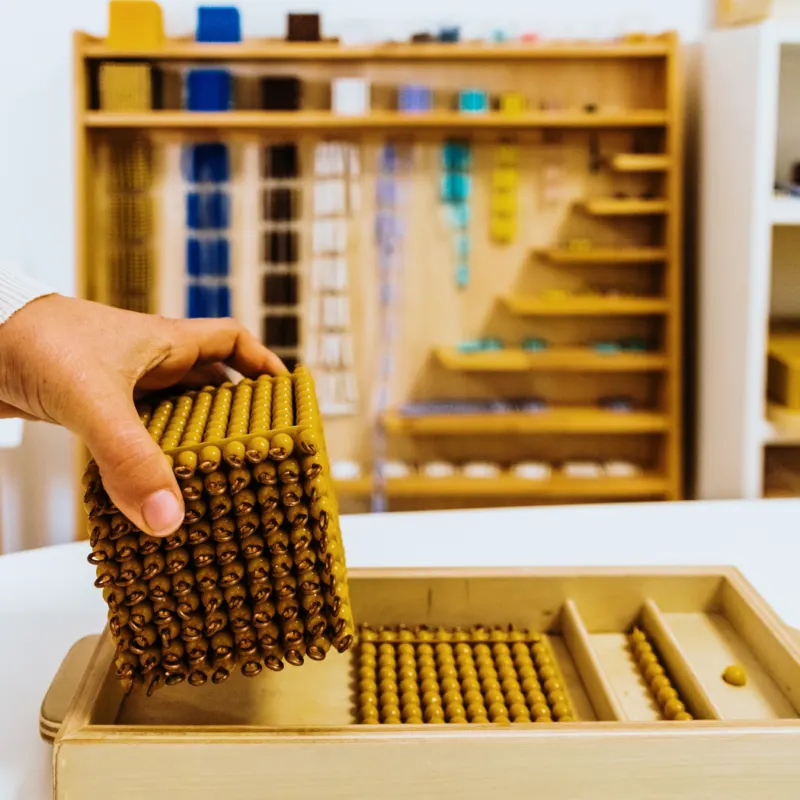
Before giving the Bank Game lesson, the child should have been given and practiced the Equivalence Tray and the Bird’s Eye View lessons.
The Aims of the Montessori Bank Game include:
- Develop the child’s understanding of exchanging
- Practice the process of changing places in the decimal system.
- Indirectly prepares the child for money activities and mathematical operations.
- Develops cooperation among children
- Develops accuracy in counting
- Develops concentration
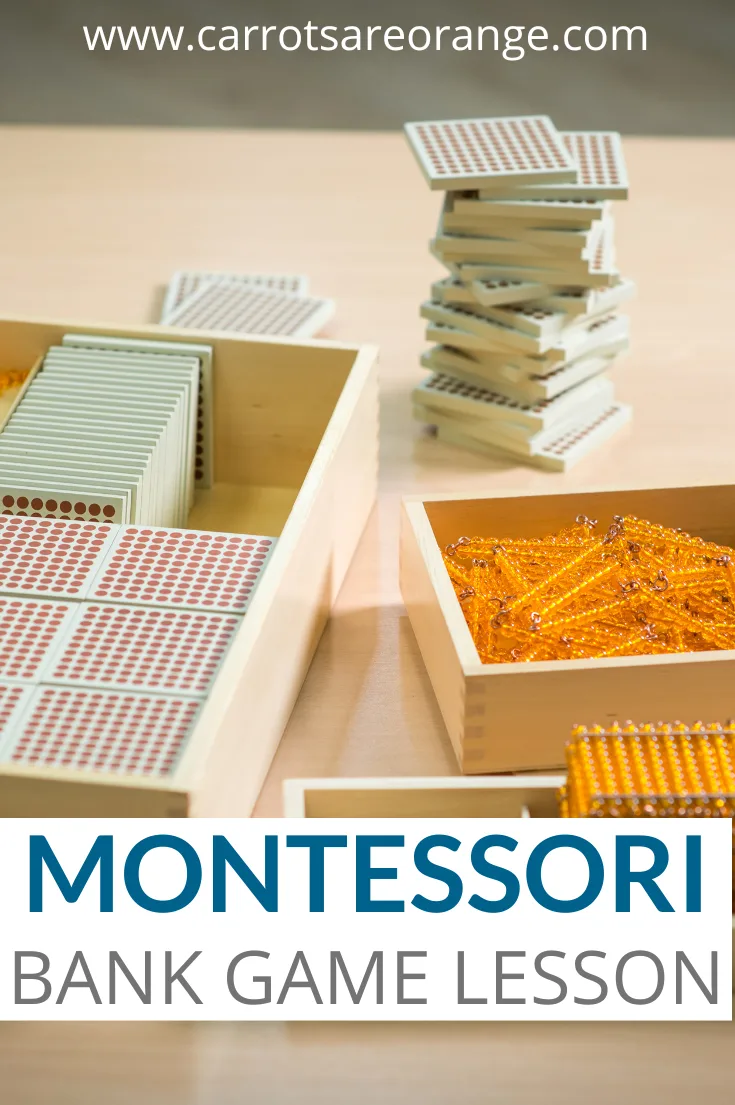
How to Give the Bank Game Lesson
- Invite one or two children to play the Bank Game
- Place the mat on the floor near the bank
- Review the equivalence tray
For One Child:
- Take the containers of units and ten bars from the shelf and place them on the mat.
- Put all the units on the mat and tell the child you would like to know how many beads are in the bank.
- Ask the child if he will count them. When he gets to ten, interrupt him and ask: “What do we do whenever we get ten units?”
- Wait for the child to answer: “Yes, we exchange them for a ten bar.”
- Have the child put the units back in their container and put a ten-bar on the mat.
- Have the child continue counting to ten and exchanging ten units for a ten bar until all the units are gone.
- Ask the child to get the numeral card for the units on the may and read it to you.
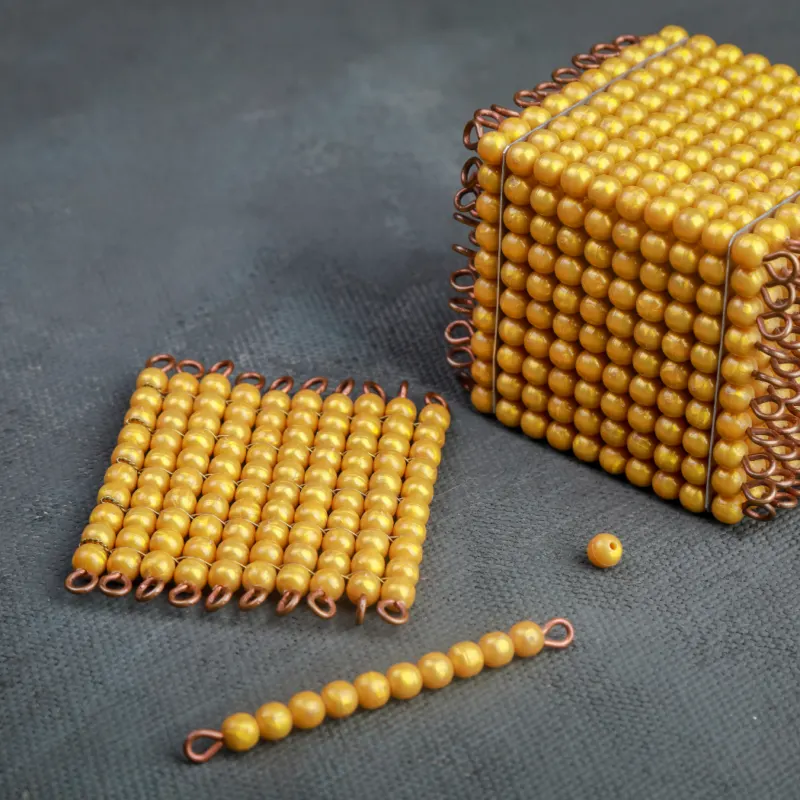
- Next, ask the child how many ten bars are in the bank.
- “You can begin by putting the bars left in the box with the bars in your mat.”
- When the child gets to ten bars, interrupt him if he does not exchange and ask” “What happens when you get ten bars?”
- “Yes, you exchange them for a hundred square.”
- Show him where to put ten bars, so they are not counted twice.
- The child counts and exchanges until he can exchange no more.
- Ask him to get the numeral cards for the tens left on his mat.
- Continue the same approach with the hundred squares.
- Ask the child to read the numeral to you when finished.
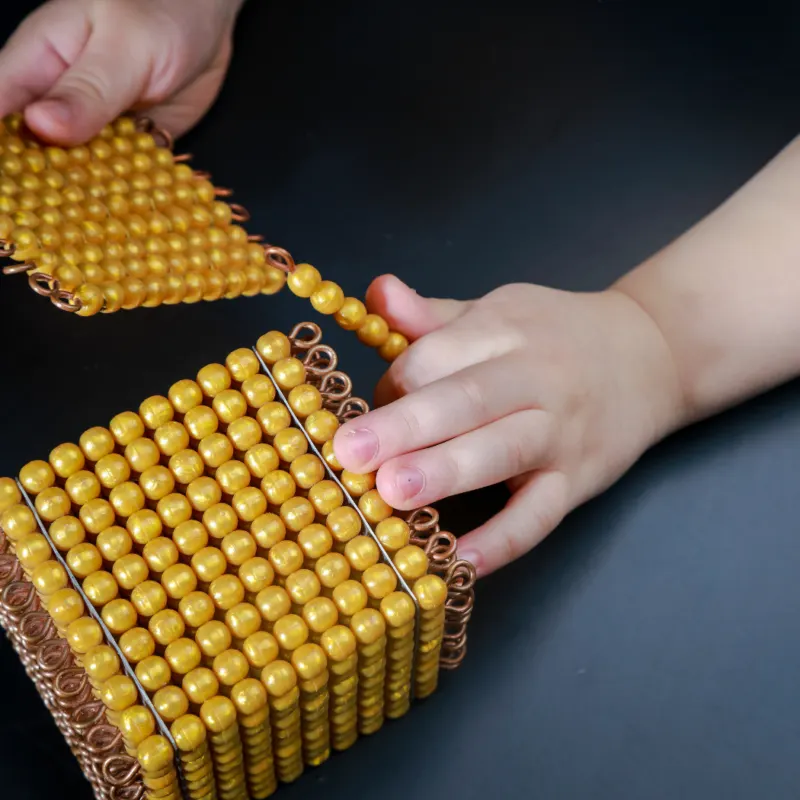
For Two Children:
- One child is the Banker, and one child is the customer.
- The customer has a fortune in golden beads on his mat [a large random quantity of beads given by the teacher], which he must put in the bank.
- First, he has to find out how many beads he has.
- He counts out ten units and gives them to the banker
- The Banker recounts them and exchanges them for a ten bar.
- The process continues until the beads are all counted.
- Then corresponding numeral cards are placed to show the answer.
- The children may switch roles whenever it is appropriate.
Bank Game Variations
- A child can count random quantities or the whole bank
- Use cards with numerals, symbols, and quantities and have the child “fetch” the amount

Montessori Bank Game Extensions
- The child can count stamps in the stamp game after having an introduction
- Children can use pennies, nickels, dimes, quarters, and dollars to teach the equivalence of coins.
Points of Interest
- Working with a friend
- Counting the whole bank
- Pretending that the beads are a fortune
- Playing roles [with two children]
Control of Error
- Teacher
- Other Child
- Child’s Previous Experience
Language: Exchange, Fortune, Banker, Customer

